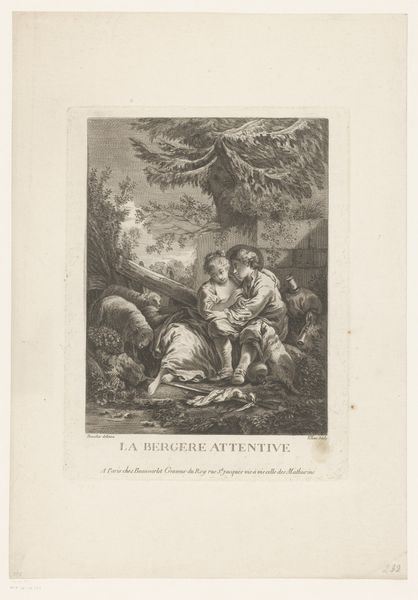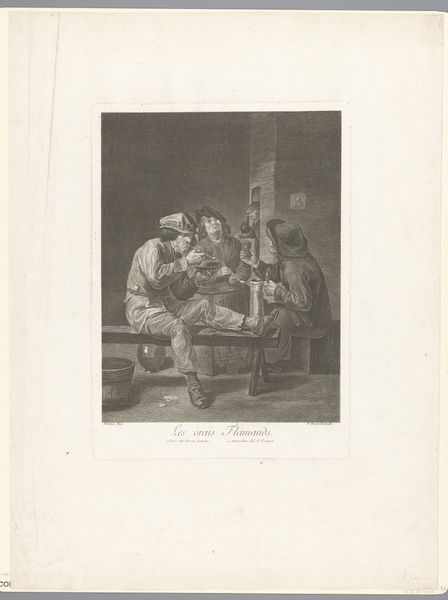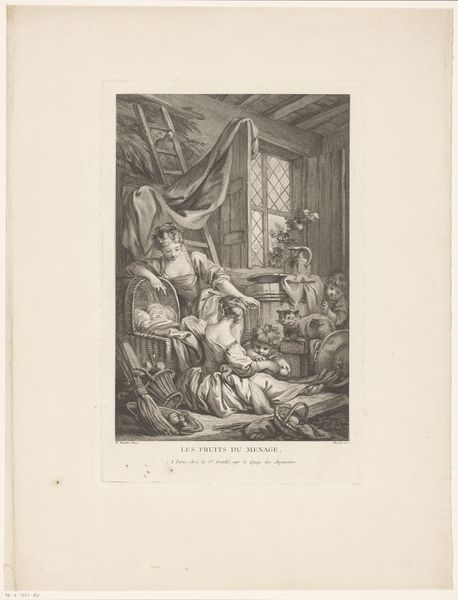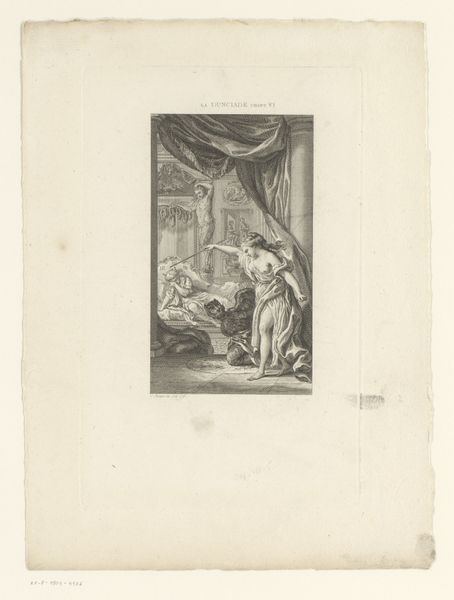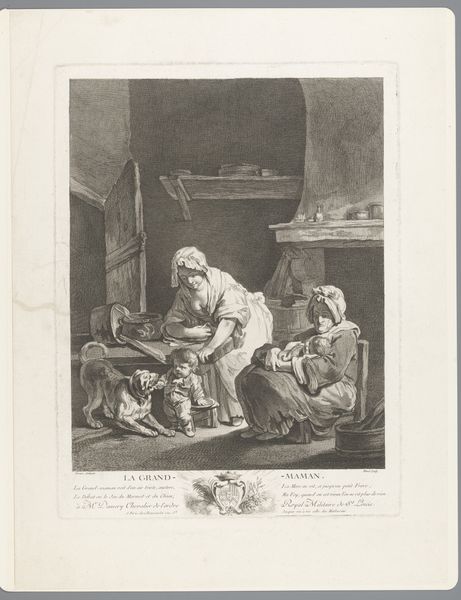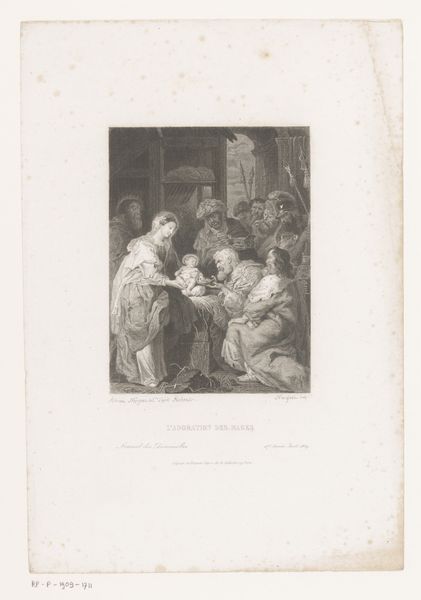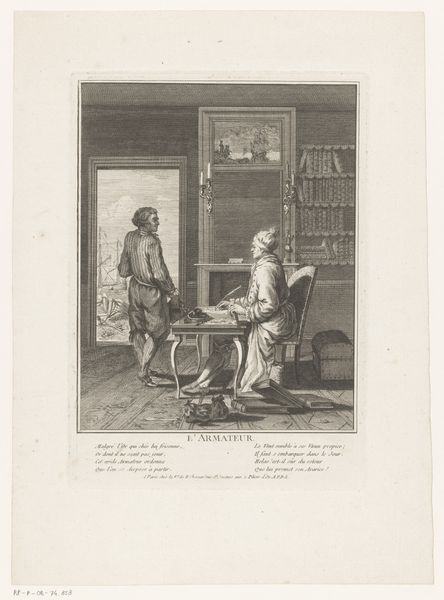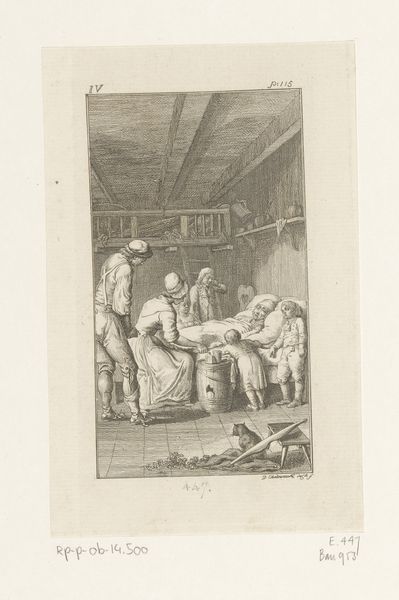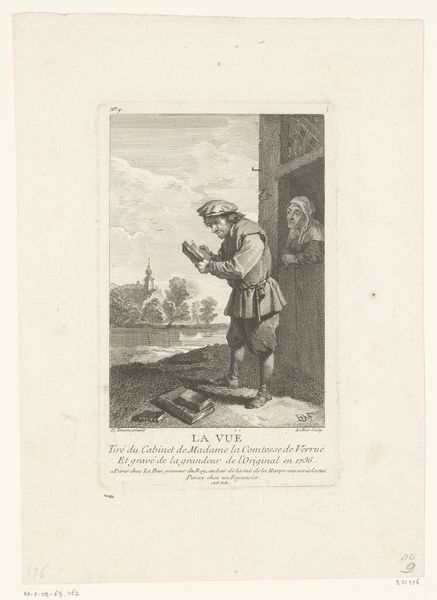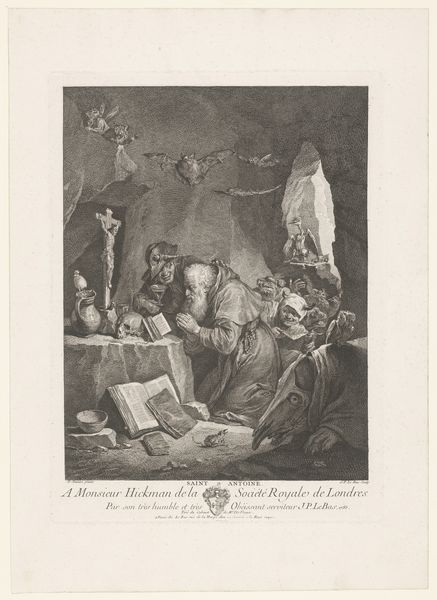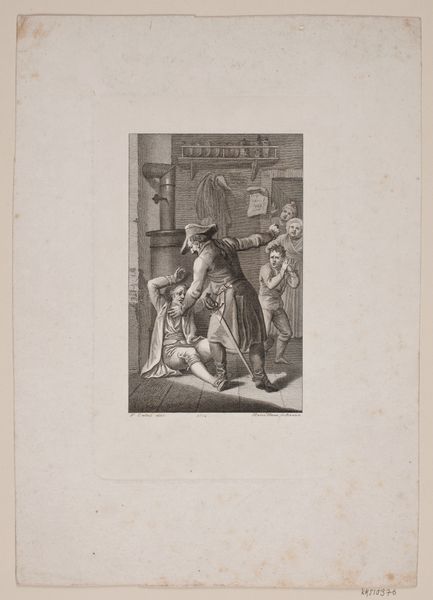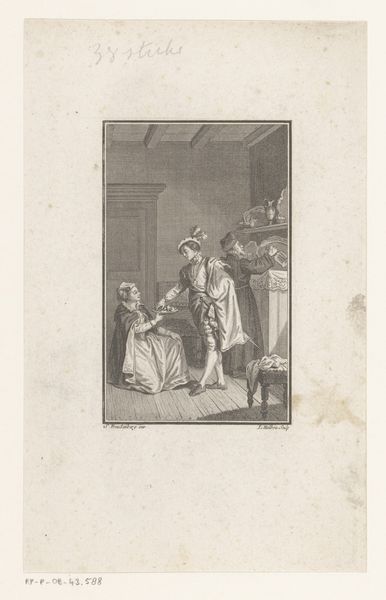
drawing, print, engraving
#
drawing
#
narrative-art
#
baroque
# print
#
old engraving style
#
white palette
#
line
#
genre-painting
#
engraving
#
realism
Dimensions: height 242 mm, width 160 mm
Copyright: Rijks Museum: Open Domain
Curator: This print, "Goede echtgenoot verschoont zijn kind," roughly translated as "Good husband cleaning his child," is attributed to Jacques Philippe Le Bas and dates sometime between 1717 and 1783. It’s a fascinating genre scene currently held at the Rijksmuseum. Editor: It’s surprisingly intimate, especially given the era. I immediately notice the close attention given to the father's tender expression as he cares for his child. There is also a figure peering out in the background that gives the entire work an uncomfortable vibe. Curator: The older woman watching, likely a mother-in-law or older female relative, serves a potent symbolic function. In many cultures, such figures represent societal expectations and traditional roles imposed upon the family unit. Editor: Exactly! The composition emphasizes those power dynamics, too. She’s lurking in the shadows, observing. Is she offering support or judgment? It feels very performative, the 'good husband' as an ideal of its time and very critical. What statement is being made, given it is called "The Good Husband," when the full text is closer to 'the Good Husband, and the evil woman'. Curator: Indeed. Le Bas's decision to render this everyday task elevates the mundane, offering a window into domestic ideals. The presence of the text below further amplifies this contrast, offering a satirical jab at traditional gender roles. It reveals the layered meanings embedded within simple imagery. Editor: And, crucially, the choice to depict the father engaging in childcare challenges prevailing social norms where such duties would almost exclusively be the woman's. It speaks volumes, suggesting a progressive attitude, but maybe hints at social anxieties. Who does what for whom? What are we saying about gender? I like that tension! Curator: Yes, art continually gives us opportunities to understand continuities as well as shifts in thought. And in the quiet setting and the details in the shadows, the scene resonates, sparking ongoing reflections. Editor: Right. These seemingly ordinary scenes reveal deeper socio-political dialogues playing out, reminding us how the personal is always, undeniably political.
Comments
No comments
Be the first to comment and join the conversation on the ultimate creative platform.
